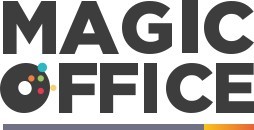
Overview of the United Kingdom Debt Management Office
Introduction to the debt management office (DMO)
The United Kingdom Debt Management Office (DMO) is a specialist group within Her Majesty’s Treasury, tasked with carrying out the UK Government's debt management objectives. It's an executive agency that was established in 1998 to streamline the processes involved in issuing debt and managing the national debt.
A historical perspective
The DMO was created to separate debt issuance from monetary policies managed by the Bank of England. Before its creation, the Bank of England was responsible for government debt management. This restructuring aimed to provide greater transparency and efficiency. According to the DMO's official website, their primary aim is to minimize the costs of meeting the government's financing needs over the medium to long term, while taking account of risk.
Core objectives and missions
The DMO focuses on four main objectives: debt issuance, cash management, market liquidity, and transparent reporting. They accomplish these tasks by issuing gilts (government bonds) and managing cash flows to ensure the government meets its financial requirements efficiently.
Our man at the helm
Robert Stheeman, the current Chief Executive of the DMO, provides insightful leadership. He has been quoted saying, "Our role is not just about issuing debt, but managing it responsibly and transparently for the benefit of the country." He emphasizes the importance of risk management and public accountability.
Not without challenges
One notable controversy surrounding the DMO was its involvement during the 2008 financial crisis. Critics argued that the rapid issuance of gilts to finance the banking bailouts caused market volatility. However, the DMO managed to navigate through turbulent times, showcasing its capacity for crisis management.
Looking forward
The DMO continues to evolve, with new strategies for sustainable finance and green initiatives. They are responsible for the creation of "green gilts," aimed at funding projects that combat climate change and contribute to sustainability goals.
Functions and responsibilities of the DMO
Key roles and objectives
The United Kingdom Debt Management Office (DMO) has several pivotal responsibilities. Established in 1998 as an executive agency of Her Majesty's Treasury, the DMO aims to carry out the UK government's debt management policy.
The primary mandate of the DMO includes the issuance and management of government debt. The office ensures that the government's financing needs and its payment obligations are met in a cost-effective manner. For example, the DMO issue various types of instruments like gilts and treasury bills to fund the government's initiatives.
One of their objectives is to minimize the cost of raising the required funds, within an acceptable risk level in accordance with the Exchequer's policies. According to the official reports from HM Treasury, the DMO has successfully reduced financing costs by refining their auction techniques and issuance mechanisms.
Issuance methods and instruments
The DMO's approach to debt issuance is meticulous. They utilize multiple methods including auctions, syndication, and tender panels to issue various financial instruments:
- Gilts: These are UK government bonds. As of December 2021, the DMO had £1.7 trillion outstanding in gilts, according to the National Audit Office.
- Treasury bills: These are short-term debt instruments used primarily for cash management purposes. The DMO frequently conducts tenders to issue these instruments.
- Green gilts: Launched in 2021, these instruments specifically aim to finance environmentally sustainable projects. They are part of the UK’s broader green finance initiative. The inaugural green gilt raised £10 billion, marking a significant step toward sustainable finance.
Maintaining liquidity and transparency
The role of the DMO extends beyond just issuing debt: it is also responsible for ensuring market liquidity. This is done through various measures like the market liquidity program which includes facilities like the arrears cash flow management system.
Additionally, transparency and accountability are core to their operations. The DMO publishes detailed reports and accounts to keep the public informed. For instance, the Treasury Debt and Cash Management section on the official DMO website provides extensive data on their activities, including auction results and issuance calendars.
Steering the DMO to success are numerous experts like Robert Stheeman, the Chief Executive since 2003, whose leadership has been instrumental in navigating various economic cycles and ensuring the agency remains agile and effective.
Debt issuance and management strategies
Debt issuance techniques and their effectiveness
The United Kingdom Debt Management Office (DMO) employs a variety of strategies to manage the issuance of debt. This process ensures the government can access necessary funds while maintaining an efficient and liquid market for government securities. These techniques are designed to meet the country's financial needs while minimizing costs and risks.
Gilt auction process
One of the primary methods the DMO uses to issue debt is through the auction of gilts, which are UK government bonds. These auctions typically follow a predictable schedule, allowing market participants to anticipate and prepare for them.
The auction process can be broken down into two main types:
- Conventional gilts: These are issued through competitive bidding where participants submit bids specifying the price they are willing to pay. The highest bids are accepted until the total amount of gilts offered is sold.
- Inflation-linked gilts: Similar to conventional gilts, but their principal and interest payments are adjusted for inflation, providing investors with protection against inflation risks.
Syndications and gilt tenders
Aside from auctions, the DMO employs other issuance methods such as syndications and gilt tenders. Syndications involve selling gilts through a syndicate of banks to ensure a broader distribution and support the market at times when large volumes of debt need to be issued.
Gilt tenders, on the other hand, allow the DMO to issue smaller amounts of debt quickly and flexibly, reacting to market conditions and funding requirements more dynamically.
Performance metrics and analysis
The effectiveness of these debt issuance strategies is continuously assessed through performance metrics and market feedback. For instance, the DMO reviews metrics like:
- Bid-to-cover ratio: A high ratio indicates strong demand for gilts during auctions, reflecting investor confidence in UK government securities.
- Yield at issuance: The interest rate investors require to purchase gilts, which helps the DMO evaluate the cost of borrowing.
- Secondary market performance: Tracking how gilts trade post-issuance provides insight into market liquidity and investor sentiment.
These metrics help ensure that the issuance techniques align with broader debt management objectives, including minimizing borrowing costs and maintaining a stable and liquid market.
Real-world examples and expert insights
A notable example of the DMO's debt issuance strategy in action was during the financial crisis of 2008. In response to heightened funding needs and market stress, the DMO employed a combination of gilt issuance methods, including an increased number of syndications to raise larger amounts of debt quickly and efficiently.
According to Robert Stheeman, Chief Executive of the DMO, “The flexibility of our issuance techniques allowed us to meet the UK's financing needs in a very challenging environment, whilst maintaining confidence and stability in the gilt market.”
The DMO's debt issuance strategies have proven effective in various market conditions, demonstrating the robust framework within which the office operates to manage national debt responsibly. More insights into their strategies reveal how the agency continues to evolve and adapt to new challenges.
The role of the DMO in cash management
Efficient handling of exchequer cash flows
The United Kingdom Debt Management Office (DMO) plays a vital role in ensuring the smooth functioning of the government’s cash management operations. As highlighted by Robert Stheeman, CEO of the DMO, their mission is to "minimize the cost of managing the government's debt in the long run" and one key way they do this is through effective cash management.
Cash management involves forecasting and managing the daily cash flow needs of the UK government, ensuring that there are sufficient funds available to meet day-to-day expenses. This is no small task given that the public sector cash requirement (PSCR) can fluctuate greatly due to differing daily receipt and expenditure patterns. For instance, the DMO's 2022-23 annual report highlighted that the UK government faced a PSCR of £122.4 billion.
One of the primary responsibilities of the DMO in this regard is to handle the Exchequer's cash management operations. This can involve organizing and executing short-term borrowing and investment operations to accommodate cash flow discrepancies. In 2022, the DMO executed £1.1 trillion worth of short-term financing transactions to maintain liquidity and efficiently manage cash balances.
Multifaceted strategies for optimal cash flow
The strategies orchestrated by the DMO to handle day-to-day cash requirements are multifaceted. Drawing from data disclosed in the national audit reports, the DMO employs a combination of short-term financing instruments such as Treasury bills (T-bills) and running balances in the Government Banking Service (GBS) accounts.
Each morning, the DMO releases a cash forecast for the day, identifying the expected net cash flow situations. Based on this forecast, the office undertakes necessary actions, such as issuing T-bills when a deficit is forecasted or investing surplus cash into safe and liquid assets. These operations help absorb variations in cash flows, maintaining optimum liquidity levels in the system.
According to research conducted by the Bank of England, efficient cash management strategies like these, help limit the interest costs on debt issuance by reducing the liquidity premium demanded by investors. This is a crucial factor for the DMO in achieving its primary objective.
Market liquidity programs and their significance
Another essential aspect of the DMO's work revolves around ensuring market liquidity, particularly in the gilt-edged securities (gilts) market. Gilts are bonds issued by the UK government, and their liquidity is critical for the efficient functioning of the market and for keeping borrowing costs low.
To support this, the DMO operates a market liquidity program in collaboration with the Bank of England and Treasury. This includes mechanisms like the repo (repurchase) market, where the DMO can borrow Gilts for short periods to ease liquidity pressures.
In 2021-22, the total volume of repo transactions facilitated by the DMO reached a staggering £93 billion, as cited in the DMO's annual report. This magnifies their role in maintaining adequate levels of liquidity, bolstering market confidence, and contributing to the overall financial stability.
Plans for increased transparency and innovations
Moving forward, the DMO has set out ambitious plans to enhance transparency and facilitate more effective cash management. These include improved forecasting techniques and leveraging technology to predict cash flow needs more accurately. Additionally, they aim to continually refine their operations to mitigate risks associated with cash management and streamline processes.
The DMO's proactive approach is reflected in its periodic reports and accounts, which provide detailed transparency on operations and financial standings. Their efforts in optimizing efficiency and reducing the net cost of government borrowing are evident.
The intricate interplay of these strategies and the continuous effort to innovate ensures that the UK's cash management framework remains robust and resilient. For more insights into the contributions and responsibilities of the DMO, check out this comprehensive analysis.
Market liquidity and the DMO's impact
The importance of market liquidity for the DMO
Market liquidity is crucial for the effective functioning of the Debt Management Office (DMO) in the United Kingdom. Liquidity refers to how quickly and easily an asset or security can be bought or sold in the market without affecting its price. For the DMO, ensuring high market liquidity means that government securities, particularly gilts, can be traded efficiently.
Impact on government debt and borrowing costs
High liquidity in the gilt market helps the UK government manage borrowing costs effectively. When gilts are easily tradable, investors are more willing to buy them, leading to lower yields and borrowing costs. According to HM Treasury, maintaining liquid markets is essential for achieving cost-effective financing for the government.
Strategies to enhance liquidity
The DMO utilizes various strategies to enhance market liquidity, including:
- Regular issuance: The DMO issues gilts regularly, which helps create a predictable and steady supply of debt securities.
- Primary dealers: The DMO works with a network of primary dealers, known as market makers, to ensure there is always a ready market for gilts.
- Inter-dealer brokers: The use of inter-dealer brokers facilitates secondary market trading and improves price discovery.
Liquidity program initiatives
One notable initiative is the DMO's liquidity program. Rolled out in collaboration with the Bank of England, this program aims to provide additional liquidity to the market during times of financial stress, ensuring continuous functioning of the gilt market. Their most recent annual report (reference year 2022) detailed the substantial positive impact on market stability and efficiency.
Case study: DMO during the COVID-19 pandemic
The COVID-19 pandemic was a significant test of the DMO's liquidity management strategies. In response to economic uncertainty, the DMO increased its gilt issuance and leveraged liquidity mechanisms to stabilize the market. Surveys and reports from that time period, including data from the Bank of England, indicate that these efforts largely prevented spikes in borrowing costs, contributing to broader economic stability during a crisis.
As Robert Stheeman, Chief Executive of the DMO, mentioned in an interview, "Maintaining market liquidity is not just a goal, it's a necessity for ensuring that we can continue providing cost-effective financing for Her Majesty's Treasury."
Green gilts and sustainable finance initiatives
Green gilts: paving the way for sustainable finance
Green gilts are an important aspect of the United Kingdom Debt Management Office (DMO). They play a vital role in the country’s push towards a greener, more sustainable economy. Green gilts themselves are government bonds specifically issued to finance projects that contribute to environmental objectives. They fall under broader sustainable finance initiatives, which have gained momentum in recent years.Background and issuance
Since the launch of the first green gilt in 2021, the UK government has shown its commitment to green finance. This first bond raised £10 billion, the largest green bond deal to date, as noted by the Financial Times. The proceeds from these bonds are earmarked for projects such as renewable energy, clean transportation, pollution prevention, and climate change adaptation.Investor interest
Investor interest in green gilts has been particularly high. According to Bloomberg, the debut UK green gilt attracted over £100 billion in orders from investors globally. The appetite for green gilts is driven by a growing demand for sustainable and ethical investment options. Investors are keen to support efforts to combat climate change while earning a return on their investments.Market impact
Green gilts have not only fostered a positive impact on the environment but also improved the overall perception of the UK in the global financial markets. The issuance of these bonds highlights the UK’s leadership and commitment to sustainability, encouraging other countries to follow suit. This commitment is aligned with the UK government’s target to achieve net-zero carbon emissions by 2050.Case study: the 2021 green gilt issuance
A case study of the 2021 green gilt issuance illustrates the impact and significance of these bonds. The issuance aimed to raise capital for environmental projects and was oversubscribed by ten times, evidencing high investor demand. Projects financed included offshore wind farms and carbon capture and storage facilities. The success of this issuance set a benchmark for future green finance initiatives, not only within the UK but also globally.Controversies and considerations
Though green gilts have been largely celebrated, they have faced some challenges and controversies. Critics argue about the proper allocation and effectiveness of the funded projects, and the monitoring mechanisms in place. It's essential to ensure that the proceeds genuinely support impactful and verifiable green initiatives. Transparency and rigorous reporting are key to maintaining investor confidence and achieving the desired environmental benefits.Expert insights
Robert Stheeman, CEO of the DMO, has emphasized the importance of green finance in the future of the UK's debt management strategy. In a recent interview with Reuters, he stated, "This is an exciting opportunity for the UK to lead by example in sustainable finance and demonstrate our commitment to environmental goals." His insights suggest that the DMO will continue to prioritize green financing as part of its broader strategy. The influence of green gilts and other sustainable finance initiatives will likely grow, in line with global efforts to tackle climate change and foster sustainable development. For more information on the broader role and functions of the DMO, visit this article.Reports, accounts, and transparency
Transparency in financial reporting
The United Kingdom Debt Management Office (DMO) takes great pride in its commitment to transparency and accuracy in reporting. According to the DMO's Annual Report and Accounts, the office has publicly declared its financial standings annually, ensuring that stakeholders are well-informed and the UK government maintains its credibility in fiscal matters. In 2022, the DMO reported a total net debt of £2,206.5 billion, reflecting a meticulous approach to fiscal management.
Importance of detailed accounts
The importance of maintaining detailed accounts in managing national debt cannot be overstated. Robert Stheeman, Chief Executive of the DMO, has emphasised that “clear and transparent reporting allows us to uphold trust and manage the debt efficiently.” Indeed, the comprehensive documentation provided by the DMO includes not just financial statements, but also extensive notes on debt issuance, cash management, and other critical operations.
Public access and accountability
Public access to these reports amplifies accountability and provides an opportunity for independent reviews. For example, the 2021 Annual Report included a detailed account of transactions, offering insights into the management of the UK’s gilts and Treasury bills. This level of transparency is crucial for maintaining market confidence and is a testament to the office’s commitment to openness.
Technological enhancements in reporting
With advancements in technology, the DMO has adopted new tools for better financial reporting. This includes enhanced data management systems that provide real-time access to financial data, ensuring that the office can more accurately forecast and report on debt and cash flows. Such initiatives are not only about improving efficiency but also about providing more granular and precise data to the public.
Verification and auditing
All reports and accounts prepared by the DMO undergo rigorous verification and auditing. The National Audit Office (NAO) audits the DMO's annual financial statements, ensuring that they meet the required standards and accurately reflect the financial activities. This independent auditing process is essential for maintaining the integrity of financial reporting.
Stakeholder engagement
Engaging with stakeholders is another critical aspect of the DMO's operations. Regular briefings and updates are provided to key stakeholders, including market participants, government bodies, and the general public, ensuring transparency and fostering trust. According to a 2021 survey conducted by the DMO, over 90% of respondents acknowledged the value of the DMO’s communications in maintaining market confidence.
Expert insights and future trends
Insights from industry experts
When it comes to the United Kingdom Debt Management Office (DMO), experts have a lot to say about its influence and strategies. Robert Stheeman, the current Chief Executive of the DMO, often highlights the paramount importance of maintaining investor confidence. 'Our primary goal is to ensure that the government’s financing needs are met efficiently. This isn’t just about issuing debt; it’s about doing so in a way that supports market stability,' Stheeman noted in a recent interview.
Future of debt management strategies
Looking ahead, the strategies employed by the DMO are evolving to address emerging financial trends and challenges. A 2022 report by HM Treasury suggests a growing emphasis on sustainable finance, particularly through the issuance of green gilts. These bonds are specifically designed to fund environmental and sustainable projects, such as renewable energy and climate resilience initiatives.
The market for these green gilts is expected to expand significantly. According to a study by the Green Finance Institute, the global green bond market could exceed $2 trillion by 2024, with the UK playing a key role. This aligns with the DMO’s commitment to supporting the transition to a low-carbon economy.
Trends in market liquidity and investment
The DMO's focus on market liquidity remains a core aspect of its operations. A 2023 report from the Bank of England highlights that ensuring liquidity in the gilt market is crucial for maintaining low borrowing costs for the government. This involves active engagement with market makers and inter dealer brokers to guarantee that gilts are accessible and tradable.
Additionally, the DMO’s net cash management operations help to smooth out the government’s daily cash flows, which supports the overall stability of public sector funds. This is particularly important in times of market volatility, as it helps mitigate risk and maintain investor confidence.
Expert predictions and strategic adjustments
Experts predict that the DMO will continue to refine its debt management strategies in response to both domestic and global economic shifts. An analysis by the National Institute of Economic and Social Research (NIESR) forecasts that the DMO will increasingly leverage digital technologies to enhance transparency and improve investor relations.
Stheeman himself has hinted at ongoing innovations: 'We are exploring new platforms and technologies to communicate more effectively with our stakeholders. Transparency and accountability are cornerstones of our operations, and embracing new digital tools will further these goals.'
In conclusion, the future of the United Kingdom Debt Management Office is one of adaptation and forward-thinking. By incorporating expert insights and keeping an eye on future trends, the DMO is well-positioned to navigate the complexities of government debt and sustainable finance.
" }












